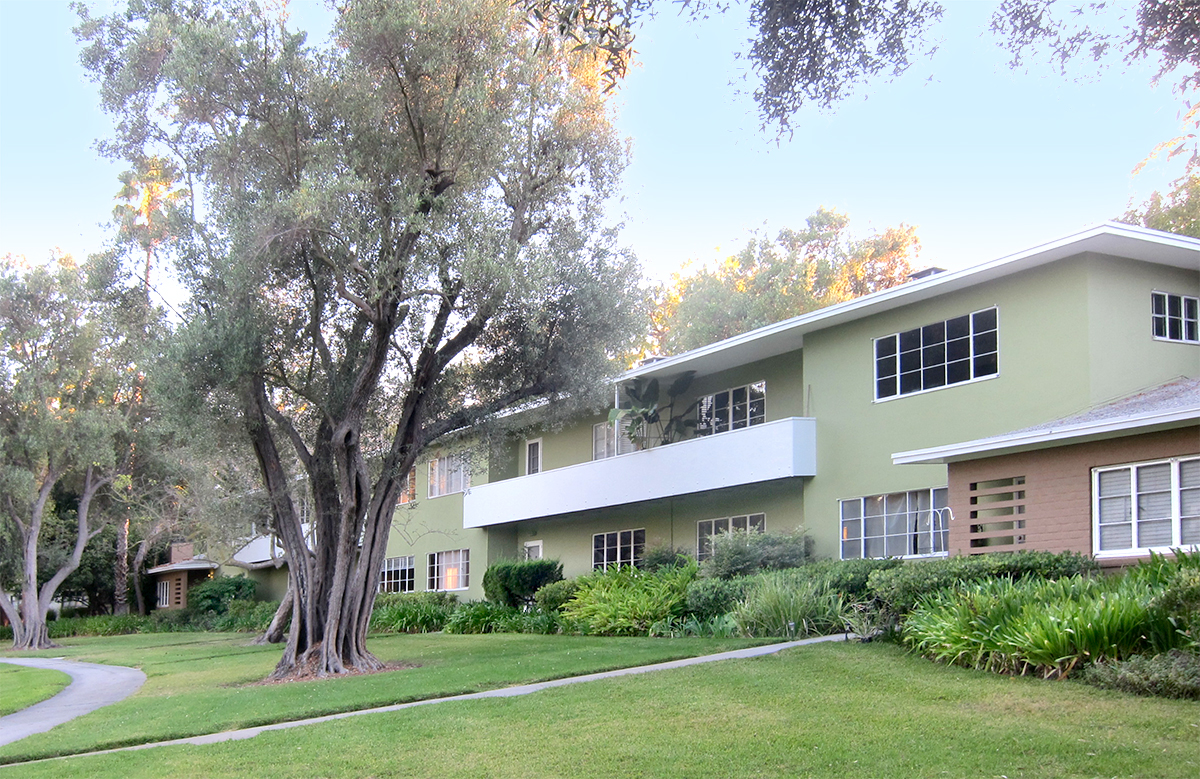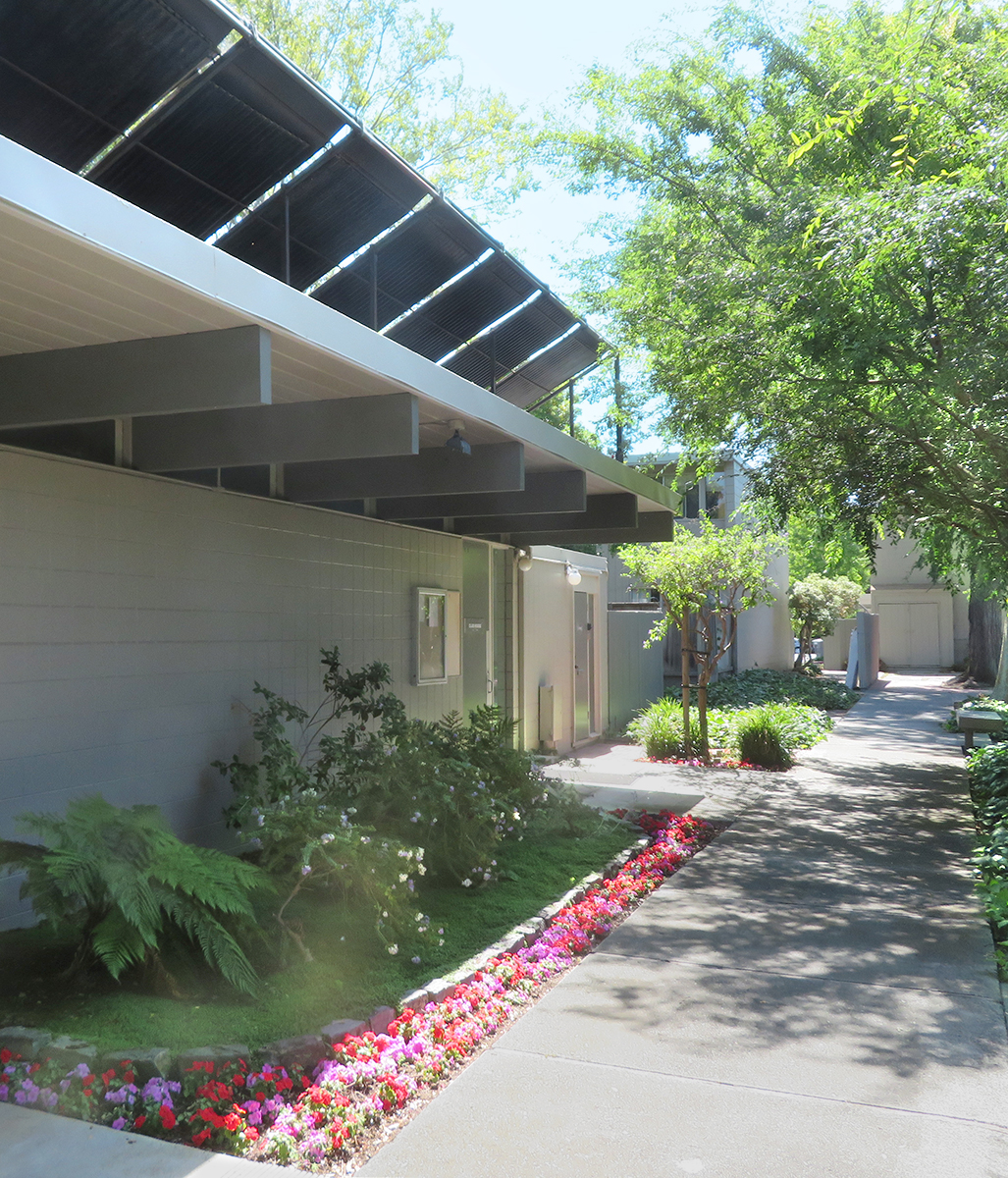
Historic Home Owners Can Save on Taxes
 |
Without question most people who live in homes built by Joe Eichler or Bill and Jim Streng know they are living in history. These special homes speak of the optimism of the post-World War II years, the growth of suburbia, the artistry of master architects.
But should owners seek historic status for these homes? Mightn’t that come with problems, like restrictions on what you can do with the place? Or might it instead, or as well, come with benefits?
Like significant property tax breaks.
The answer, says Steven Keylon, a landscape historian, author, and preservationist in Los Angeles and Palm Springs, is yes.
 |
“Typically, depending on how long you've been in the house, the tax break cuts your property tax in half, at least,” he says, based on his experience in these two cities. “We have friends down the street. They’re saving 75 percent on their property tax.”
His friend lives in the 1959 Hogback Spec house in Palm Springs, designed by Hugh Kaptur and shown in Keylon’s book, ‘The Modern Architecture of Hugh Michael Kaptur.’
The state Mills Act, which was enacted in 1972, “”is the single, most important economic incentive program in California for the restoration and preservation of qualified historic buildings by private property owners,” according to the state Office of Historic Preservation, which doesn’t handle Mills Act contracts, but does offer information.
Not all cities or counties provide Mills Act contracts to owners of historic homes. The preservation office lists those that do, which include such mid-century modern hot spots as Marin County, Oakland, the city and county of Orange, the city of Sacramento, San Jose, Los Altos, Los Angeles, Palo Alto, Redwood City, Santa Clara County, and Sunnyvale.
Now wait. Why would governments give away tax money to homeowners?
 |
“Cities want to preserve their historic resources, and they do understand that sometimes if you’re the owner of a historic resource, it can cost more to maintain it, and to maintain it in the way that it should be, to preserve the historic character of it,” Keylon says.
The theory behind the tax relief is that the savings will be used to maintain or improve a property – while adhering to historic codes – not for spending on a trip to Hawaii.
The Mills Act renews automatically, and it stays with the house when it is sold – which can be an attraction to buyers. The act primarily benefits owners who pay high taxes, so it has little if any benefit to longtime owners whose taxes are already low due to Proposition 13, for example.
To qualify for the Mills Act, a building or neighborhood has to be listed as historic. Most jurisdictions require that the listing be on a local historic register, though homes on the state or national registers may also qualify in some areas.
“Getting the house or the structure designated is the really time consuming thing,” Keylon says. “And for a single-family home, it’s a lot of forms to fill out, and you have to prove integrity and why it’s important.
 |
He adds: “If it’s an Eichler house, that’s already pretty well established.”
Once a home is declared historic, Keylon adds, “Usually the city will just work with the county tax assessor to get that property designated as a Mills Act property.”
Bear in mind, he warns, each city has different rules and procedures. And most, if not all, cap the number of contracts they give out for fear of losing too much tax revenue. Jurisdictions can also freeze the program.
He advises homeowners interested in a Mills Act contract to consult with local planning officials.
In Los Angeles, where Keylon led the charge to win Mills tax relief for the famous condo community Baldwin Hills Village, today called Village Green, the city required a detailed ten-year contract showing how the money saved on taxes would be spent.
 |
“It turned out to be about six hundred thousand dollars a year in property tax the city of L.A. would be giving up in order for the Village Green to have participated in that,” he says. “So what they wanted is some kind of ten-year maintenance and rehabilitation plan to kind of match that in a way.”
Palm Springs is not so strict. About the friends who got a tax break for their Kaptur house, Keylon says, “The city doesn’t require them to do anything with that, other than maintain the house so there’s not peeling paint and dead shrubs or that sort of thing. And if they do any work, that it’s done sensitively.”
Getting Village Green designated 'historic' and getting the tax break was tough, Keylon says, because it's 629 units on 68 acres. “The city didn’t want to enter into 629 different Mills Act contracts. They wanted one Mills Act contract for the entire property,” Keylon says.
He and other backers made the successful case to the community that a Mills tax break would pay for deferred maintenance. “That was the largest Mills Act contract ever awarded at that time,” he says.
In Los Angeles, Keylon says, the Mills Act appears to be “a driving force, why people want to have their properties designated, because of the big property tax break.”
- ‹ previous
- 304 of 677
- next ›



